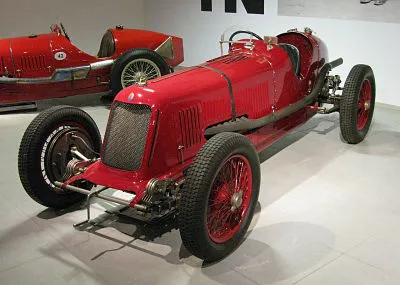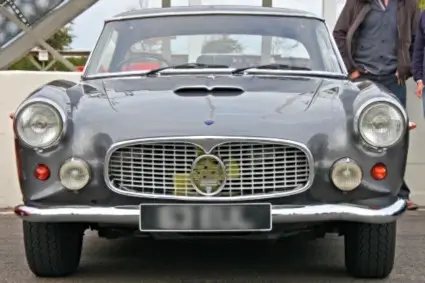-
- Maserati 250F Tyres
- Maserati 300S Tyres
- Maserati 150 Tyres
- Maserati 5000GT Tyres
- Maserati Mistral Tyres
- Maserati Quattroporte Tyres
- Maserati Sebring Tyres
- Maserati Mexico Tyres
- Maserati Ghibli Tyres
- Maserati Indy Tyres
- Maserati Bora Tyres
- Maserati Merak Tyres
- Maserati Khamsin Tyres
- Maserati Kyalami Tyres
- Maserati 3500GT Tyres
- Maserati Biturbo Tyres
- Maserati 4200 GT Tyres
- Maserati 4900 Tyres
Maserati Tyres
On the following pages, Longstone Classic Tyres give classic tyre fitment recommendations for Maserati cars.
Classic Maserati tyres
Currently old Maserati cars are well looked after by the classic tyre manufacturers. Pirelli have started making the Stella Bianca again for the very early cars and racing cars such as the fabulous Maserati 250F. Then predominantly in the ‘50s the majority of classic Maserati road cars fitted 185 VR 16 PIRELLI CINTURATO CA67. Then in 1964 when Pirelli developed the CN72 and were able to produce a 205R15 radial tyre that was capable of withstanding the power of Maserati sports cars, cars like the Mistral and Sebring changed from the 185 VR 16 PIRELLI CINTURATO CA67 onto 205 VR 15 PIRELLI CINTURATO CN72. We are fortunate in that Pirelli are producing these performance classic Maserati tyres again.
If your car is not listed, don't panic! Please give us a call on:
01302 711 123
or
Email: sales@longstonetyres.co.uk
For more information have a look at our Classic Maserati Blog.
Maserati History

Officine Alfieri Maserati SA was created in December 1914 in Bologna, Italy, by the brothers Alfieri, Ettore, and Ernesto Maserati. Maserati's first important product was spark plugs, which were used in aviation engines during World War I. The Maserati symbol, inspired after Neptune's trident on a statue in Bologna's Piazza Maggiore, was developed in 1920 by Mario Maserati, the company's fourth brother. Alfieri Maserati raced for other manufacturers before teaming together with his brothers to create the first Maserati automobile, the Tipo 26, named after the year it came out. The V4, a 16-cylinder race vehicle that reached 154 kilometres per hour in 1929, was the most impressive Maserati of the 1920s.
Alfieri died in 1932, and his younger brother, Bindo, entered the firm the following year. Tazio Nuvolari, an Italian racer, won races for Maserati in 1933 and 1934, racing the eight-cylinder 8CM type. The remaining Maserati brothers sold the firm to Modena businessman Adolfo Orsi in 1937 but stayed with the company for another ten years. Maserati was able to continue producing successful racing cars thanks to Orsi's funding investment. Wilbur Shaw, an American racer, won the Indianapolis 500 in 1939 and 1940 in a Maserati 8CTF known as the "Boyle Special." During WWII, Maserati concentrated on the production of spark plugs once more, but they also produced batteries and electric delivery trucks.
Maserati extended their product portfolio after the war to include sports cars and gran turismo vehicles. The first Maserati GT was the A6 500, which debuted in 1948 with a six-cylinder engine and bodywork by Turin's Battista ("Pinin") Farina. Maserati, on the other hand, continued to produce race vehicles. Juan Manuel Fangio, an Argentine driver, won the Formula One Grand Prix world championship in a Maserati in 1957.

The Tipo 60 "Birdcage" and the cars derived from it were Maserati's premier sports cars of the 1960s. The welded tubular chassis of the automobile earned it the moniker. The 3500 GT, a coupe that launched in 1957, was one of the company's most popular automobiles. Maserati's initial Quattroporte model arrived in 1963, and the first Maserati Ghibli debuted in 1967. Citroen obtained a substantial share in Maserati in the late 1960s and used a Maserati motor in one of its own vehicles, the Citroen SM. Maserati started manufacturing the high-performance mid-engine Bora under its own name in 1971.
Maserati was bought in the mid-1970s by Argentine billionaire Alejandro de Tomaso. The Biturbo, which debuted in 1981 as a coupe with a twin-turbocharged engine, went on to become Maserati's best-selling model line. During the 1980s, the Chrysler Corporation bought a share in Maserati. Maserati's Chrysler TC (Touring Coupe), a joint project intended for the American market, was unveiled in 1989 but was not regarded as successful, and the relationship with Chrysler was discontinued.
Fiat, Italy's largest automaker, bought Maserati from de Tomaso in 1993. Around 1997, Fiat handed over the operation of Maserati to Ferrari, a former adversary that Fiat also owned. Maserati returned to the U.S. in 2002 with the Spyder, a convertible derived from the 3200 GT coupe that had been obtainable since 1998. In 2005, Fiat separated Maserati from Ferrari and merged it with Alfa Romeo, another Fiat brand. Maserati was then recognized as Fiat's premium brand once the company was renamed Fiat Chrysler Automobiles in 2014.



